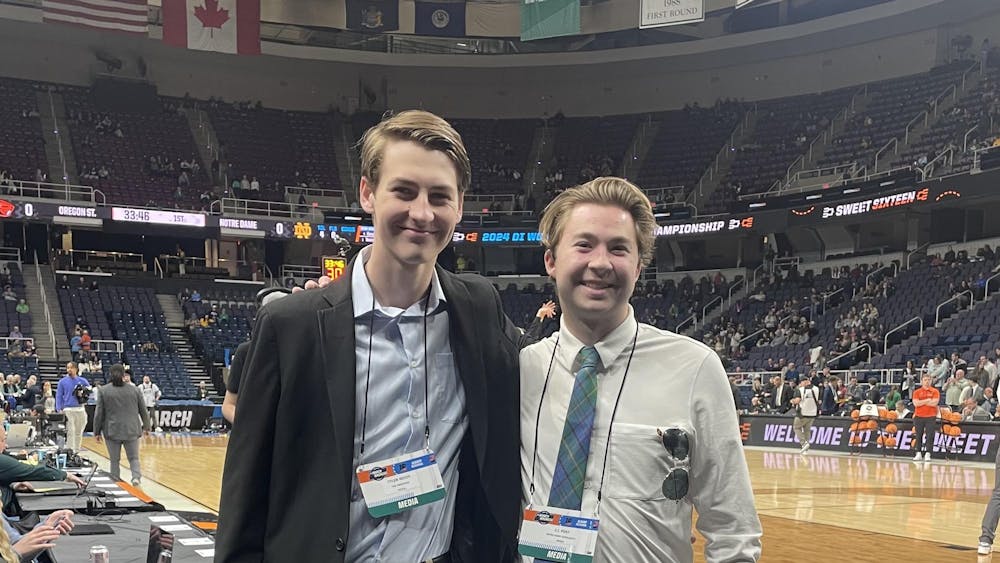When you dedicate a whole column to writing about literature, you may find yourself responding to the ultimate question: “What is your favorite book?”
While I certainly have several, I always find the need to add a qualifying statement, as if these works are not substantive on their own.

“It takes a while to get into it,” is a go to of mine. And when they ask, “What is it about?” I also find myself fumbling for a concise explanation. “Well, it’s hard to put into words.”
I love books that are about nothing.
Plot-wise, the literature I read doesn’t consist of much. There is no one-sentence summary that can define the book, or act as an enticing logline. The commerciality of these works is meager to none.
Literary fiction is often defined as following “non-conventional plot structures” and being character-driven. These novels aren’t typically able to fit neatly into a specific genre, and they are most notable in the ambiguity of their endings.
One of my top-of-mind examples is Julie Otsuka’s “The Swimmers.” The novel follows the lives of a group of recreational swimmers who visit the same pool. Throughout the book, the reader jumps in and out of their perspectives and experiences through free, indirect discourse. However, nothing significant happens. If anything, the crack that forms at the bottom of the concrete pool, one of the only fundamental events which occurs in the novel, is more metaphorical than physical. The incident causes rifts and strains within the relationships of the swimmers.
“The Bell Jar” by Sylvia Plath is another book where when I recall reading it, I remember more about the way it made me feel, rather than specific scenes or instances that take place. The premise is that a college student (Esther Greenwood) goes to New York City for a summer internship to pursue journalism. However, declaring that the setup is what the book is “about” would be a disservice. Most of the scenes are vignettes about her interactions with the people she meets, and most importantly, her dissent into mental illness. You experience Esther’s disillusionment with the world as she grapples her loss of adolescence. You encounter her dissatisfaction with the grievances of the world.

I am often left curious and unsatisfied when I read these kinds of literary fiction novels. There is always something slightly vague and incomplete in the endings, as we never truly experience a true resolution, since there often wasn’t an explicit conflict in the first place. The formulaic relief that we experience when reading or watching our favorite genre-specific media doesn’t hold true for the world of “plotless” literary fiction. It’s indecisive, confusing and messy.
After reading all of this, you may wonder how I am a marketing major, as I don’t seem to be doing a very good job “selling” this kind of literature. And you would be correct. However, I think there’s something more realistic and contemplative about these kinds of books.
In contrast, classic storybook endings are more idealistic than truthful. But more than that, in the bustle of routine, we don’t always get to see the full range of a person’s life. Even with people we are close to, we often see slices of their experiences. The rest is up to speculation, interpretation or is disregarded.
Many “slice-of-life” books may seem to be dull upon hearing about its contents. Some follow a person’s day doing seemingly trivial tasks (“The Remains of the Day” by Kazuo Ishiguro). Others contain stream-of-consciousness descriptions that make up the bulk of the word count (“To the Lighthouse” by Virginia Woolf). However, I find that they are the most accurate in depicting the scope of our observation of people’s lives.
In all honesty, we only get to be with those around us for a brief amount of time. Conversations are snippets into a person’s livelihood, and we often don’t get to see every facet of them. I think this honesty and limitation of human connection is exactly what literary fiction thrives on. A part of us wishes we could see more, but we must be content with the glimpse we are provided of another’s world.
In the same way, the atmosphere of college life is like peering into vignettes. We only get to see scenes and selected fragments of strangers, and even friends, as we ebb and flow through the quotidian patterns demanded of us. Class. Dining Hall. Library. Dorm. These are the spaces in which we get a glance of what the day looks like for the people around us. It’s not always the most exciting or glamorous, but it’s raw, and it’s real. And I think that candidness is what makes literary fiction worthwhile.
So, what’s this column about? Perhaps a synopsis would not suffice. But then again, this is no piece of literary fiction.
Elizabeth Prater is a junior at Notre Dame double majoring in marketing and the Program of Liberal Studies (great books). She is interested in the cultural implications of analyzing classics and literature under a contemporary lens. When she isn’t writing, she loves playing the violin, hiking in the PNW, going to concerts with friends and offering unsolicited book recommendations. Elizabeth always appreciates hearing from readers, so feel free to reach out eprater@nd.edu or @elizabethlianap on Twitter.












